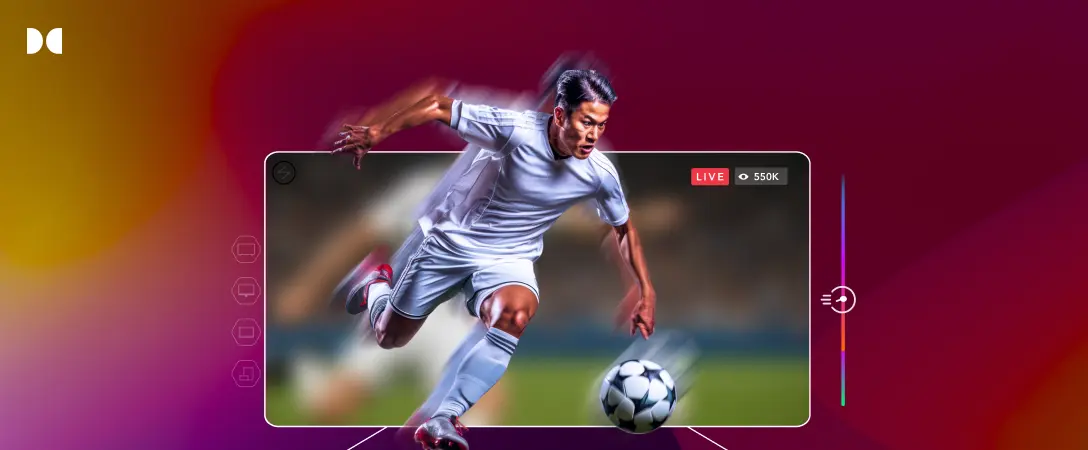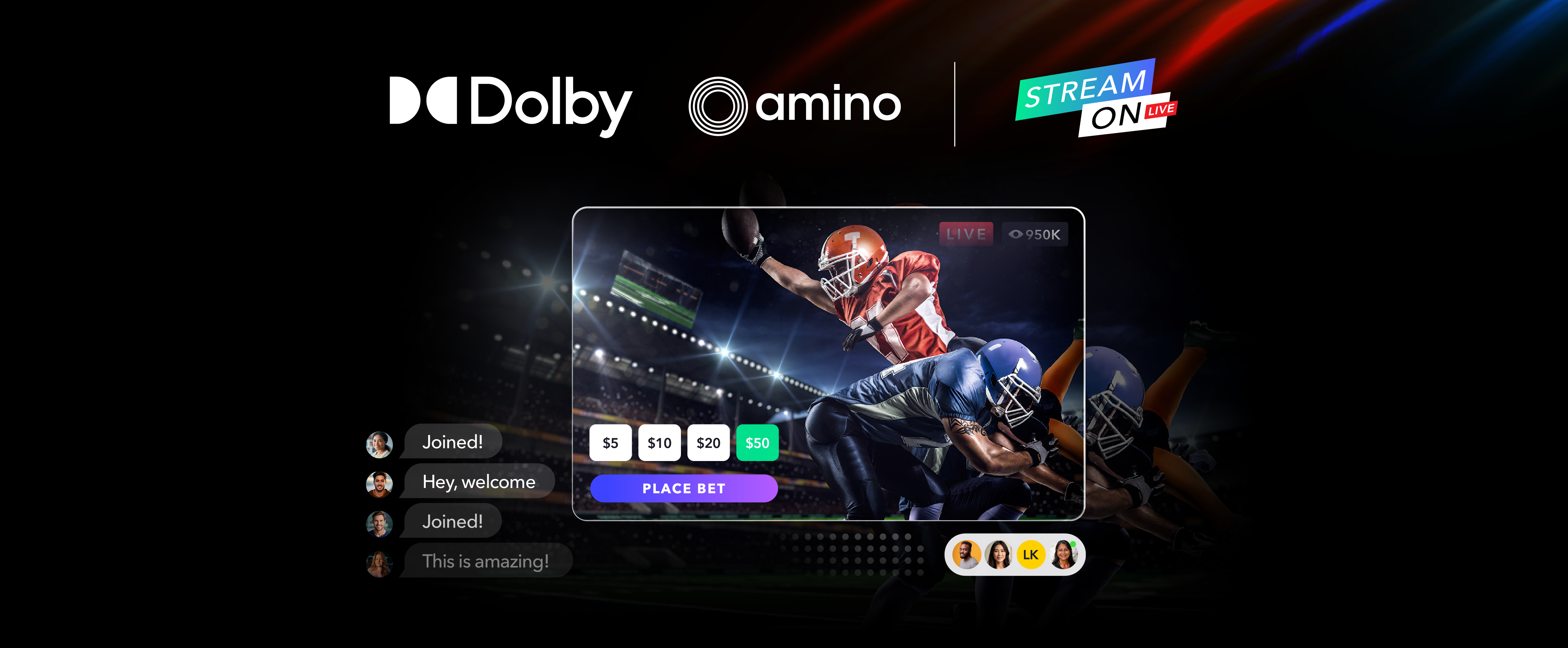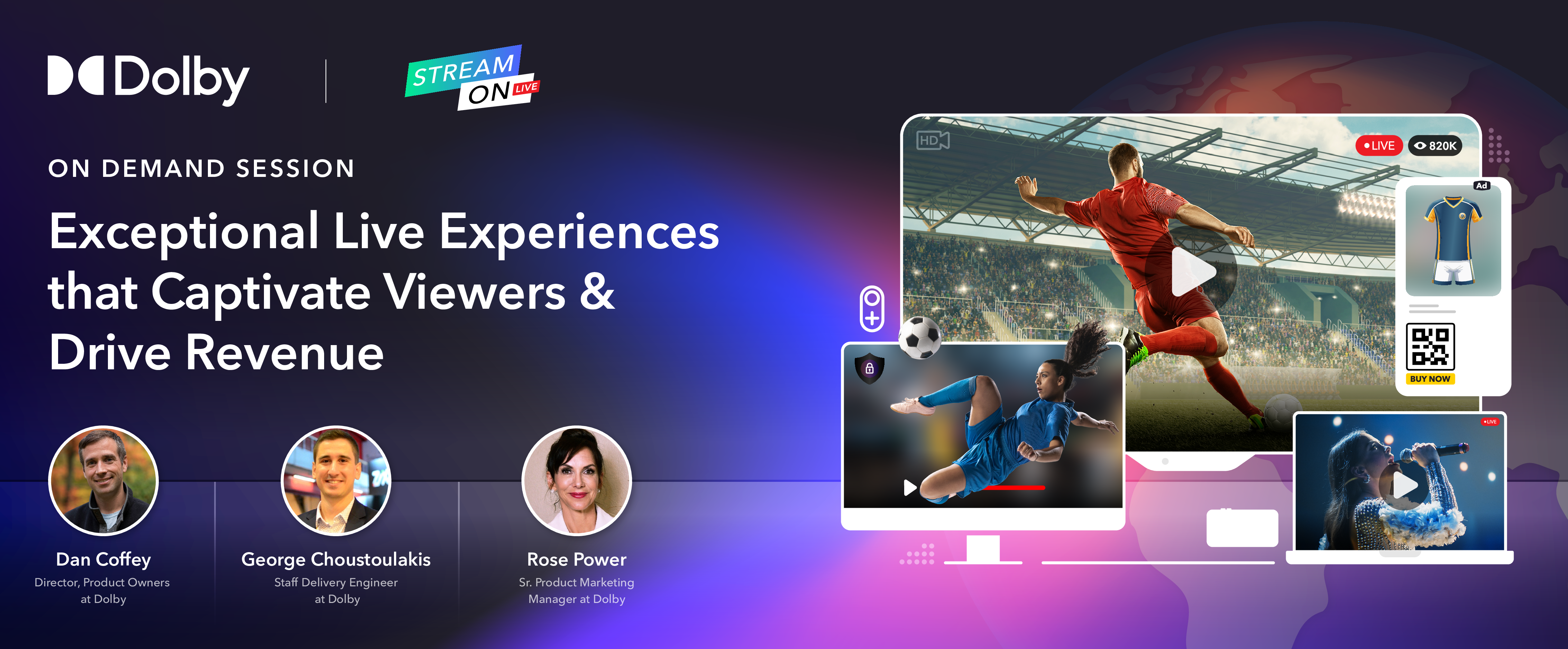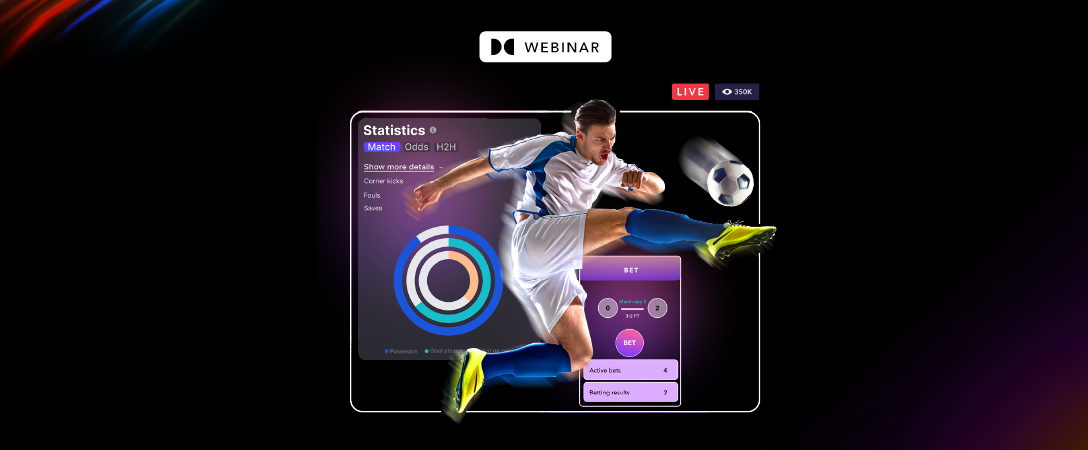As streaming technology advances to support sub-second latency, real-time streaming has become a non-negotiable for many industries. It enables broadcasters to bring in a level of interactivity.
In this article, we will cover the ins and outs of using WebRTC and HESP for streaming with sub-second latency. We’ll start by discussing use cases where sub-second latency is valuable before reviewing each protocol.
Who needs sub-second latency?
Sub-second latency is valuable in many streaming use cases, especially those replacing in-person attendance, since it enables real-time interaction. With sub-second latency, viewers can comment on the event and engage with other fans, creating an immersive experience.
Some of the top use cases for sub-second latency include:
- iGaming and casino livestreaming
- Sports streaming with betting
- Live auctions
- Bi-directional communication (i.e., video conferencing, streams with multiple remote presenters, etc.)
It’s worth noting that sub-second latency is not the goal in every industry or every type of stream. Some streams are fine with a bit longer latency.
WebRTC and HESP: Powerful protocols for sub-second latency
Two robust streaming protocols make sub-second latency possible: WebRTC and HESP. Let’s check them out.
What is WebRTC?
WebRTC is a streaming protocol designed by Google to support video conferencing. The protocol was developed to provide sub-second glass-to-glass latency to facilitate the same back-and-forth dialogue that is possible with a traditional phone call.
Although initially developed for video conferencing, WebRTC is becoming more prevalent in professional livestreaming. Since it is open-source, WebRTC is highly compatible with existing streaming technologies. It is an adaptive solution, which means it can adjust to different network conditions to maintain a high-quality streaming experience.
Another significant benefit of WebRTC is that it is secure. This is very important when running a high-level broadcasting operation because you don’t want your stream to be compromised or accessed by an unintended audience.
What is HESP?
High Efficiency Streaming Protocol (HESP) is another robust protocol. HESP offers sub-second latency, which is terrific for creating more interactive user experiences. Since it provides in-sync playback across all devices, there’s no risk of spoilers. Plus, it supports instant zapping and seeking times and offers full adaptive bitrate (ABR) streaming, which helps provide a high-quality experience regardless of network conditions.
HESP offers up to a 20% reduction in bandwidth usage compared to other similar protocols, which is positive for multiple reasons. Broadcasters can use this bandwidth reduction to save money or reinvest the bandwidth savings into delivering higher-quality streams.
Since HESP is based on HTTP, it’s compatible with many existing streaming technologies, making it scalable over existing infrastructure. It is compatible with standard encoders and CDNs, ensuring cross-platform playback.
A real-life example of the demand for sub-second latency
Did you know that online viewers are more likely to watch live events online if the stream is not delayed from the broadcast?
Livestreamed events are generally delayed by 30 seconds or more than the traditional broadcast feed. This results in a spoiler effect during sports events, when you hear neighbors cheer for an action you haven’t seen yet or see commentary on social media before the action on your screen.
Fox Sports, which broadcast the 2020 Super Bowl, acknowledged that viewers would experience the action quite a bit later than those watching in the stadium. This delay would’ve been minuscule if they had access to the technology broadcasters have today.
One study finds that 58% of online viewers are more likely to watch live sports online if the stream is not delayed from the broadcast. All these examples highlight the importance of synchronized playback of live events.
Final thoughts
Thanks to HESP and WebRTC, professional broadcasters can create interactive live streaming experiences with sub-second latency. By creating more lifelike experiences, viewers can engage with one another and participate more actively in the event.
Dolby uses both HESP and WebRTC to support streaming with sub-second latency.
Our technology is here to help you enhance your viewers’ experience, regardless of the devices they use to access your stream.
Contact us to learn how our powerful player can help you achieve sub-second latency.








